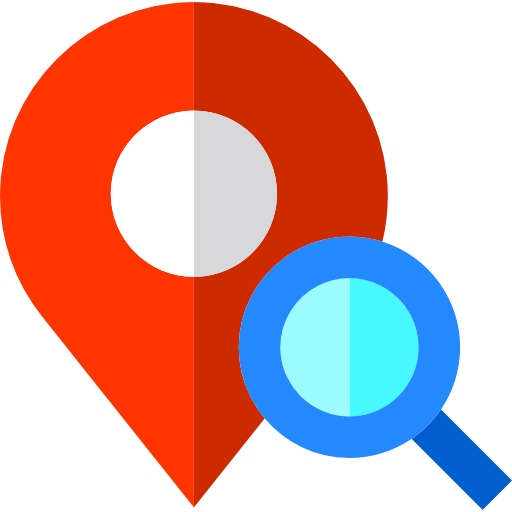Preposition Definition and Examples
..

Basics of Preposition
Preposition is a word or group of words used before a noun or pronoun to show its relation with the other words of the sentence to make it more meaningful. From the word itself we can get its meaning.
Preposition= pre + position (used before a noun or a pronoun)
These words have their position prior to the noun or the pronoun. The usage of correct preposition makes a sentence meaningful and the usage of preposition varies from case to case.
For example
-
Manish is sitting on a stool.
-
The cat jumped upon the mouse.
-
I am in the office right now.
-
He stays behind my house.
In these examples on, upon, in, behind are the prepositions.
Some Notable Points
-
When the object is an interrogative pronoun (What, Who, Which, Where, Whose etc.) preposition is placed at the end of the sentence. For example
Which class do you study in?
Which chair do you sit on for studies?
What is crying for?
Who was he talking to?
Which house do you live in?
This is the person whom I gave some money to.
Here which and what are the interrogative pronouns and they are the objects of the preposition so their place is at the end of the sentence.
-
In some sentences, the preposition is placed at the beginning of the sentence. Usually such sentences are interrogative in nature. For example
-
By which train did you come?
-
For whom were the instructions given?
-
When the object is relative pronoun ‘that’
-
This is the book that you asked for.
-
This is the show that Mahesh is fond of.
-
This is the student that I told you of.
-
When the object is infinitive
-
This is the best place to stay at.
-
I need a pen to write with.
-
This is an effect game to play with.
-
I have a perfect to place to live in.
-
In some cases, relative pronoun is hidden. In such sentences, preposition is placed at the end of the sentence.
-
This is the guest house I live in.
-
This is the teacher I told you of.
-
In some miscellaneous sentences, the preposition is placed at the end.
-
They hate being laughed at.
-
He likes being looked at.
-
This I insist on.
Classification of preposition
Prepositions of directions
|
To, towards, for, along, against, across, up, down, into
|
Prepositions of place/ positions
|
At, in, on, above, below, over, under, between, among, amongst, amid, amidst, before, behind
|
Prepositions of time
|
At, on, for, since, before, after, within, in, till, by, during, from
|
Some other prepositions
|
Of, off, about
|
Detailed Description of the prepositions
-
‘To’ is used to destination.
Manish is going to market.
-
‘Towards’ or ‘Toward’ is used to show destination with direction.
Tanush and Garima are going towards Krishna Nagar.
-
‘For’ also is used for preposition of direction.
Anshul is leaving for Delhi tonight.
-
Along means ‘KE SAATH’
Manisha walks along the bank of river every day.
Amit walks along the road in the evening.
-
‘Against’ is used in multiple senses.
-
Used for the opposite direction
It is difficult to sail against current.
-
Used for the sense of ‘pressing on’
Manoj is standing against the wall.
There is a ladder against the almirah.
He is leaning against the tree.
None dares to go against ‘the code of conduct’ in the organization.
-
‘Across’ is used in multiple senses.
SAJAN MERA US PAAR HAI, MILNE KO DIL BEKARAAR HAI.
My beloved lives across the river, I am so eager to meet him.
A bridge is laid across the river.
English language is spoken across the country.
He threw the luggage across his shoulders.
-
Go across (HOKAR GUJARNA)- in the sense of ‘Go through’
When I want across the overall process, I understood the entire situation.
-
Come across- to meet suddenly
I came across my English teacher on the way when I was going to school.
I came across him in the job fair and he asked my long term plan.
Note- suddenly and with are not to be used with ‘come across’. In the competitive exams, such questions are generally asked.
-
‘Up’ means UPAR.
-
Ramesh climbed up the tree without anyone’s aegis.
[aegis means support]
-
‘Down’ means NEECHE
-
Zoya climbed down the tree surreptitiously.
[surreptitiously means secretly]
-
‘Into’ is used for motion towards inside.
-
I poured tea into a cup.
-
Reshma jumped into the river for a bath.
Prepositions of place/Position
-
‘At’ is used before small places.
-
He lives at Shyam Nagar in Kanpur.
-
He is at home right now.
-
‘In’ is used for big places.
-
We live in India and we are proud to be an Indian.
-
He was in west Bengal those days.
-
‘On’ shows touch between two objects.
-
My mobile is on the podium.
-
There is a cap on his head.
-
Above and below are used to show the level
-
The airplane was flying above the clouds.
-
Those who are below 25 years are fit to apply for this post.
-
The matter is above suspicion.
-
The work suggested by him is below my expectations.
-
He is above 30.
-
Over and Under are used to show vertical position
-
There is fan over your head.
-
Your watch is under the table.
-
‘Between’ is used for two people or two things.
-
Madhu is sitting between Monika and Karishma.
-
Distribute the sweets between the two children.
Note-
-
After the usage of ‘between’ always use objects.
For example
-
There has been no ambivalence between you and me. [Not you and I] [Ambivalence- confusion]
-
There are convivial relations between Zoya and him. [Not Zoya and he] [Convivial- Pleasant]
-
Always use conjunction ‘and’ after the usage of between. No other conjunction will be fit here.
-
There is great nexus between Madhu and Nidhi.
-
You can come for the interview between 10 a.m. and 5 p.m.
-
The final cost of this product is between 2000 and 5000.
[not between 2000 to 5000]
-
If there is a single noun or pronoun after the usage of ‘between’, it must be in plural form. For example
Between the cadets.
Between the soldiers.
Between the boys.
Between the girls.
Between these two boys.
Between these two girls.
Between them.
Between us.
-
Distributive pronoun each and every are never used after the usage of ‘Between’. Since they both are singular so there is no requirement after the usage of ‘Between’
Between each boy
Between every girl
Instead between each boy and the next or between the boys can be used. Similarly between each girl and the next or between the girls can be used.
-
If there is no reciprocal relationship, between can be used for more than two also.
There is a treaty between these four countries.
There is an alliance between these three companies.
We hope that you must have found this exercise quite useful. If you wish to join online courses on Spoken English, Public Speaking Skills, Personality Development, Interview Preparation, Soft Skills, Goal Setting, Cofident Speaker, feel free to contact us at +91-9936804420 or email us at aditya.inspiron@gmail.com.
Happy Learning
Team Inspiron Technologies



Leave a comment